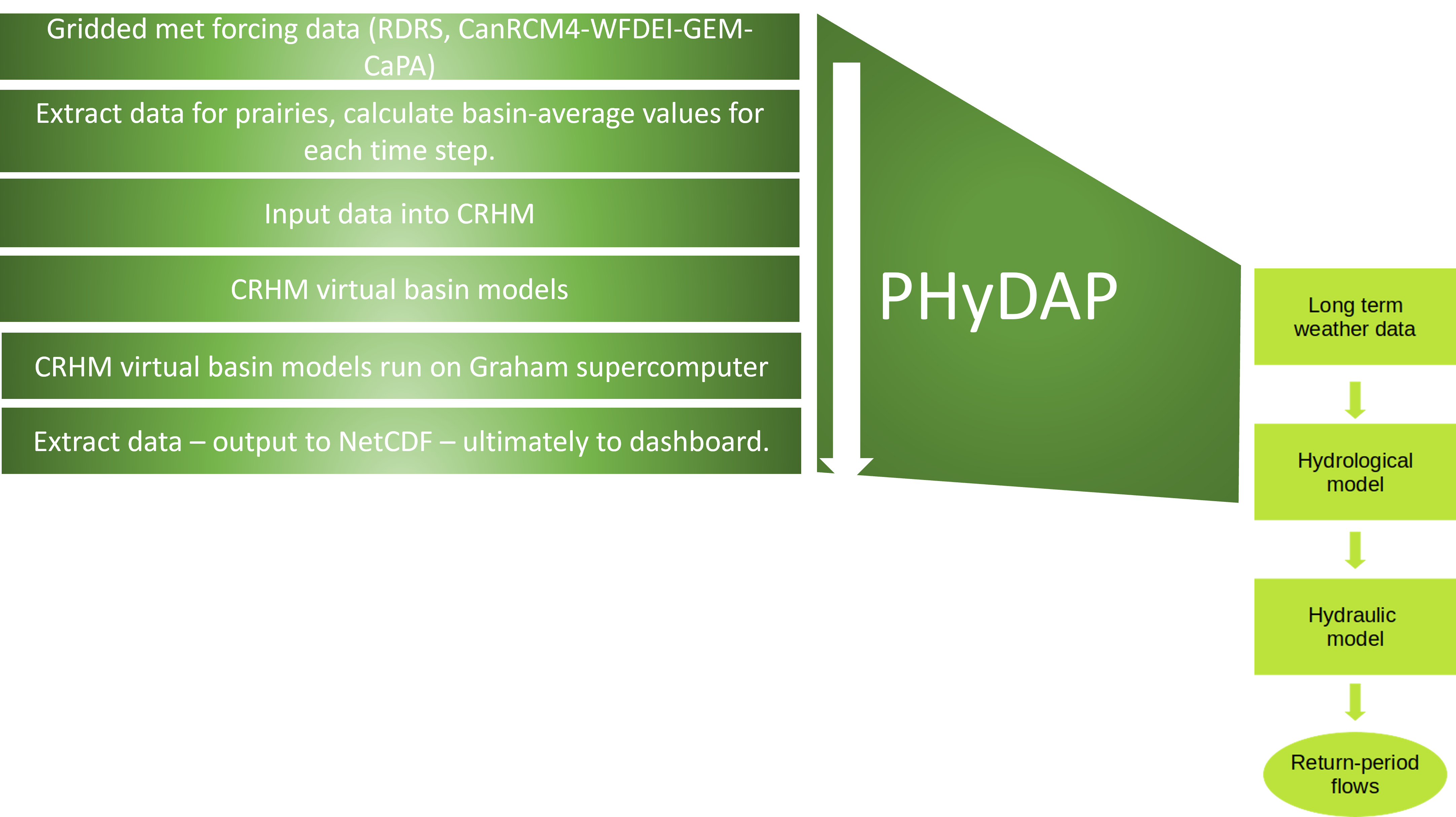Progress
In pilot testing. Seeking additional pilot test partners.
Reason for development
PHyDAP addresses a crucial data and information gap. There are no tools or data products available for hydraulic design and analysis that have been developed for the unique challenges of Canadian Prairie drainage basins.
Applications
The hydrological data from PHyDAP can be combined with hydraulic models to support infrastructure design. PHyDAP provides hydrological data that is more reliable than existing sources, which are not specific to prairie hydrology.
Summary
PHyDAP is a data product that comes from applying the Cold Regions Hydrological Model (CRHM) to each of the watersheds in the Prairie Watershed Classification. The CRHM uses over 30 years of climate data to output a time series of daily rainfall, snowfall, evapotranspiration, snow sublimation, depression storage and upland basin runoff. Although there are seven classes of watershed, CRHM uses climate data from within each watershed, producing outputs specific to each of those 4000+ watersheds. This provides locally specific time-series data which can be used in hydraulic modelling. By providing locally specific hydrological data in this way, PHyDAP can significantly reduce uncertainties in hydraulic design.
We are currently partnering with Lower Souris Watershed Committee to test the accuracy of the Prairie Watershed Classification and compare the performance of PHyDAP to existing hydrological data in hydraulic design. We will update this page as we learn more. We are also seeking more partners to carry out further pilot testing. We are particularly interested in working with Indigenous communities and municipal governments. If you would like to find out more, please get in touch at prairie.water@usask.ca. Or read the executive summary.


